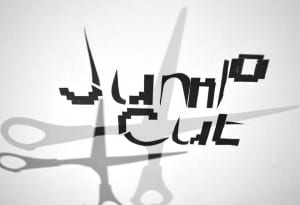I am truly honored and ecstatic to have the job title of ‘Director’. By having the role of director, I have been gathering knowledge from the book by Kate Mitchell, The Director’s Craft: A Handbook for The Theatre (2009). I specifically looked at how to prepare for the role of director. I believe that a director has two basic responsibilities, firstly to bring about a combined vision within the finished production, and secondly to lead others toward its final presentation.
I have researched many directing and devising books for guidance and inspiration; The Actor Speaks: Voice and the Performer book helped me understand how to manage balancing being the director and an actor for the company, whilst still having a professional relationship with the other company members. I knew that the director’s role ‘can be a lonely one’ (Rodenburg, 2002, p.253). This was why I wanted to concentrate building a relationship with the actors and stage manager so we could really work as a team. I wanted to be a director that would ‘bring inspirational insight into the rehearsal room’ (Rodenburg, 2002, p.253) which would also inspire the other members to share their own ideas and visions so that we could build ‘Username’ collaboratively. Most importantly, Rodenburg states, ‘the actor-director relationship seems destined to be uneasy and maybe this tension accounts in some way for those unforgettable performances that we will always remember’ (2002, p.253).
During our first meeting as a company, we talked a lot about what we wanted our theatre company to represent and portray. The term ‘JumpCut’ to us has the definition of, uncertain, sporadic, fast and broken, we wanted this definition to link to our final show ‘Username’ and additionally linking to social media, technology and society’s idea of ‘perfect’. We discussed as a collective that this theory of how social media and society is linked to how individuals are becoming obsessive about creating the ‘ideal’ identity online.
During the first rehearsal we decided to research social media sites such as Facebook to research our online ‘friends’ recent status’, make them anonymous, and use these to create an exercise that would help us create some starting material. This exercise included us searching for ‘typical’ status’ in our own time, bringing them to the practical space and sharing and swapping in the group. The actors chose a status and expressed it using their bodies and facial expressions to create a movement sequence. I then wanted to experiment collaborating these movements whilst Stacey read the status aloud which was going to be a voice-over. One of the first ideas was to have a projection screen behind us and have the words typed up as we performed the movements, however we realised this made the movement a little show and dull.
As a company we realised that most of the status’ were about personal emotions and how it is dramatized and heightened for social media. This got me thinking…when communication on social media becomes more dramatic than the communication in real life, how do you keep up with what a true identity is or do you become someone else and create an online fake identity? We have since been exploring more within technology, and how photographs can be edited to create a better version of the original.
![Gudge, C. [rehearsal] 2015](https://jumpcuttheatre.blogs.lincoln.ac.uk/files/2015/03/11061942_1555225181433514_3401483222084975906_n-300x300.jpg)

Works Cited:
Gudge, C. (2015) JumpCut rehearsal. Lincoln.
Gudge, C (2015) JumpCut Theatre Logo. Lincoln
Mitchell, K. (2009) The Director’s Craft: A Handbook for The Theatre. New York: Routledge.
Rodenburg, P. (2002) The Actor Speaks: Voice and the Performer. Hampshire: Palgrave Macmillan.